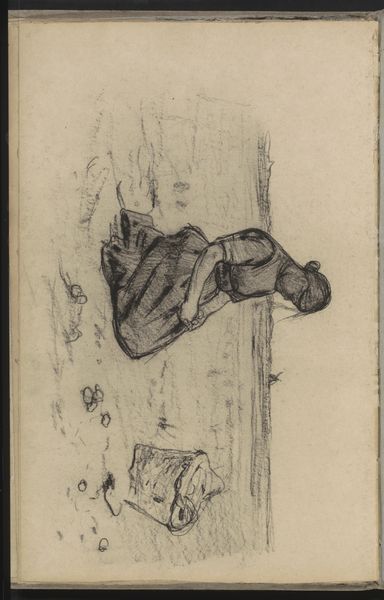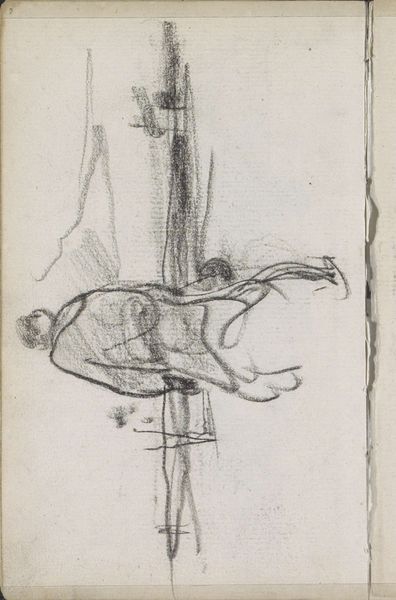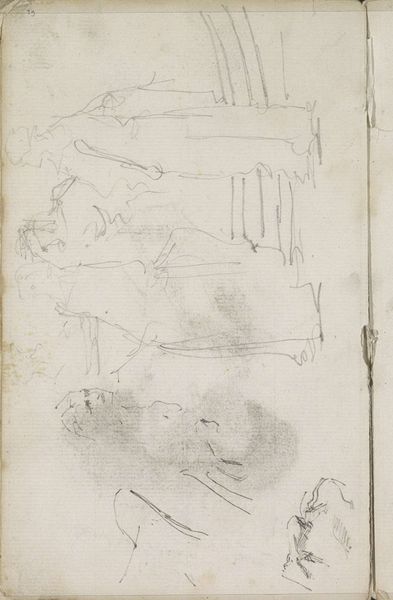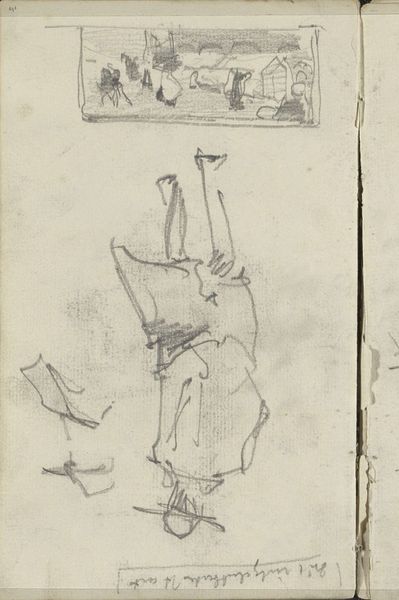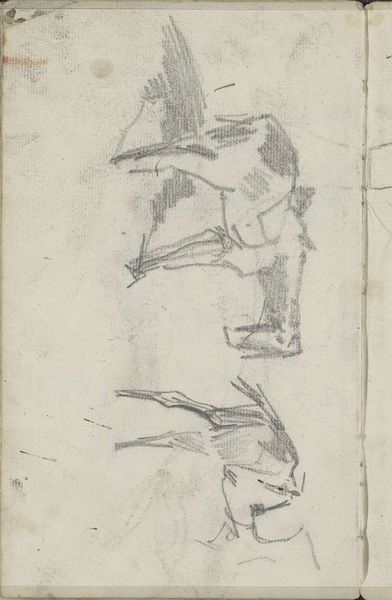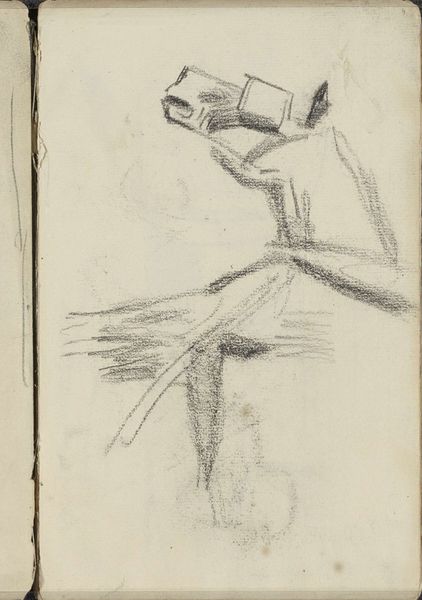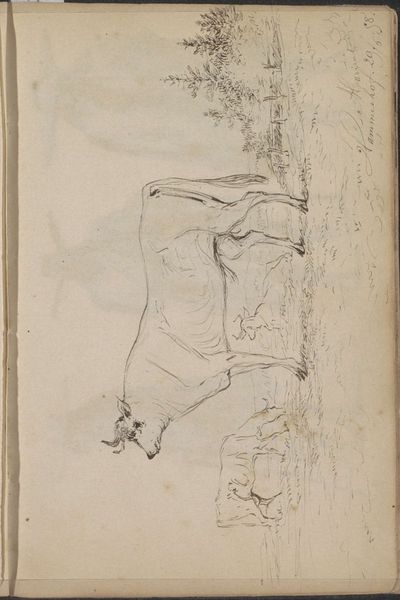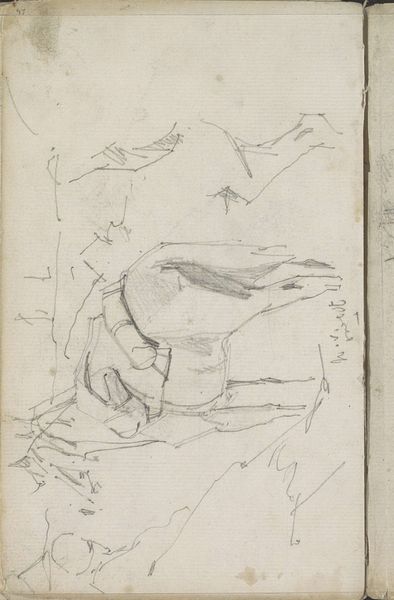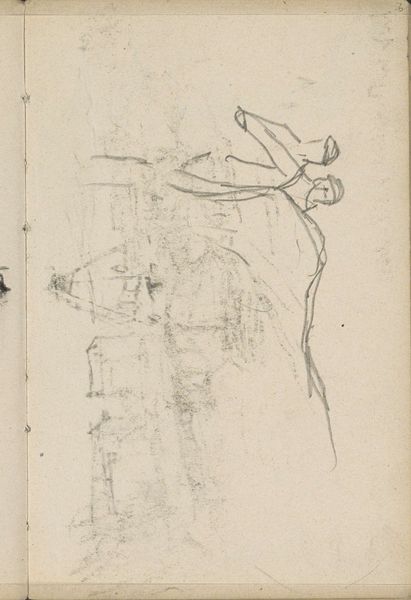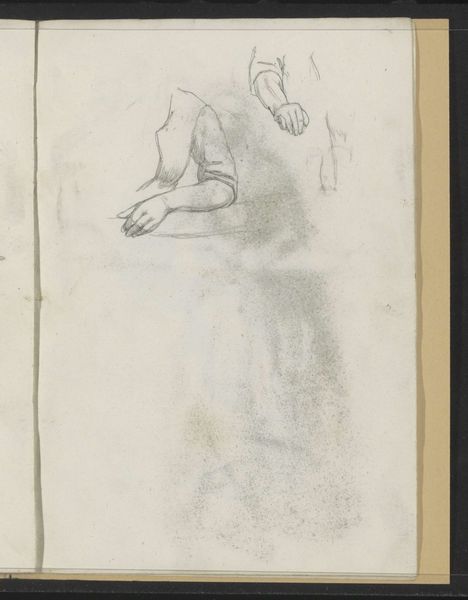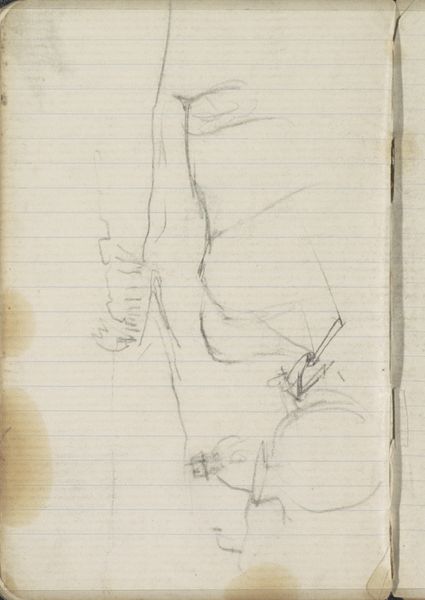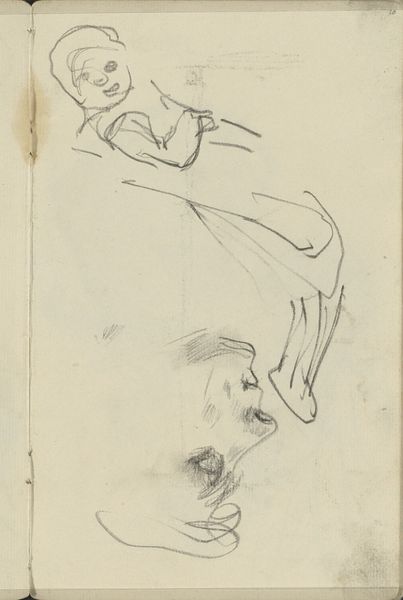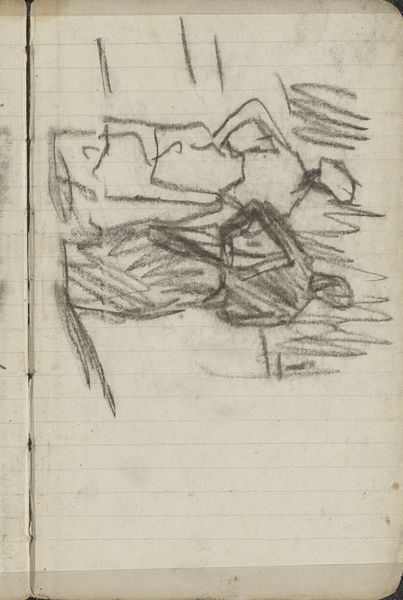
Copyright: Rijks Museum: Open Domain
Editor: So, here we have George Hendrik Breitner's "Figuurstudies," created around 1895-1898, using graphite and pen on paper. It seems to depict figures, maybe reclining or sleeping, in quick, almost frantic sketches. What do you see in this piece? Curator: What I see are the material conditions of artistic practice laid bare. Graphite and pen on paper are humble, readily available materials. The artist's choice signals an interest, perhaps, in documenting fleeting moments or exploring forms without the pressure of creating a finished, polished product. It challenges the very notion of 'high art,' doesn't it? Editor: Definitely. It feels very immediate and process-oriented. The roughness makes me think about the artist's hand, the speed and the physical act of drawing. Does the realism style play into that, too? Curator: Absolutely. Realism, in its attention to everyday subjects and unidealized forms, invites us to consider the social context in which these figures exist. Are they laborers? Are they sick? And how does Breitner’s access to these materials—paper, graphite—position him in relation to the figures he depicts? Is there a power dynamic at play in the act of representation itself? Think about that! Editor: That's a compelling point about power dynamics. The rapid lines almost suggest an urgency to capture something transient or vulnerable. Curator: Precisely! And that vulnerability becomes another layer of material consideration. What kind of social conditions lead to the visibility of vulnerable bodies, and how is Breitner engaging, or perhaps exploiting, that visibility through his chosen materials and techniques? Editor: This makes me rethink the whole idea of a simple sketch. I now see so many questions about labor, class, and even the act of seeing. Curator: Indeed! Breitner’s sketch becomes a site where materials, social context, and artistic labor converge, inviting us to critically examine the systems that shape both the creation and the consumption of art. Editor: I appreciate your materialist perspective; it gives a richer insight to a drawing that at first glance looked simple. Thanks so much.
Comments
No comments
Be the first to comment and join the conversation on the ultimate creative platform.
